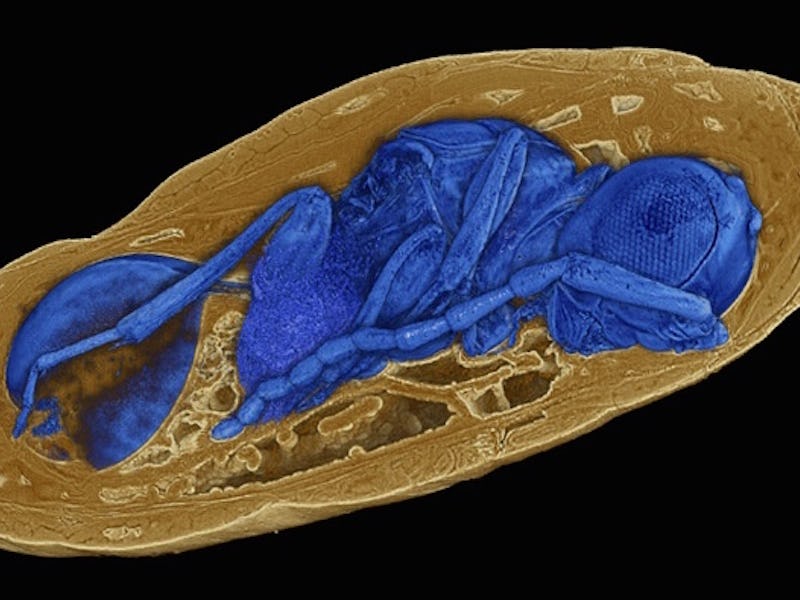Xenomorph-Like Parasitoid Remained Hidden in Fly Egg for Millions of Years
“The wasp literally stared at me from the screen."

Alien’s chest-ripping xenomorphs are far closer to reality than you might be comfortable knowing. Like xenomorphs, the large majority of wasps are what scientists call parasitic wasps, meaning that as undeveloped babies they like to eat their host from the inside out, eventually killing it. In a new study, scientists found evidence of parasitic wasps in fly corpse fossils dating back to Paleogene era, 66 to 23 million years ago, showing just how ancient this gruesome practice is.
The study, published online Tuesday in Nature Communications, is the accumulation of over a century of work. The prehistoric fly pupae were discovered at the end of the 19th century, but according to a commentary by lead researcher Thomas van de Kamp, Ph.D. of the Karlsruhe Institute of Technology, the fossils received little attention because they simply weren’t as attractive as fly pupae preserved in amber, such as those made popular in Jurassic Park. Fortunately, the authors got over their aesthetic hangups and gave the pupae a second look.
After further investigating 1510 of the fly pupae, the team realized that they weren’t just looking at fly eggs. They were face to face with parasitic wasps that were developing inside the eggs, like xenomorphs hibernating until it’s time to hatch. In total, they found 55 parasitation events by four wasp species.
“The wasp literally stared at me from the screen,” said van de Kamp in his online commentary.
Like xenomorphs, the ancient wasps discovered in the study incubate inside their host until it's time to disperse, a process that requires the host to die.
A large number of wasps are parasitoids, meaning that they are considered parasitic in only one phase of their life cycle. When a mother wasp is keen to lay her eggs, she seeks out an unsuspecting host to act as both shelter and food for her unborn. The baby wasps eat the host from within until they are strong enough to go out into the world on their own, and their host is, well, dead.
Although scientists know that approximately 10 to 20 percent of all extant insect species are parasitoid wasps, they mostly only have fossil records of them as adults. This new study gives a stunning glimpse into their early stages in life.
Here's how the parasitic wasp Xenomorphia resurrecta would have deposited its egg into an unwitting fly pupa.
“Our results not only allowed the description of four new species, but – because of the large amount of samples – facilitated their morphological and ecological characterization,” wrote van de Kamp.
The new research also gives concrete evidence of how long these sneaky little guys have been exploiting unsuspecting bugs for the advancement of their own species. On one hand, wasps help to control insect populations, which mean less bugs eating human crops. On the other, they’re just incredibly creepy, giving us yet another reason to dislike these ornery pests.